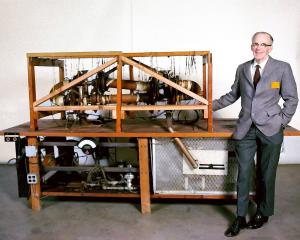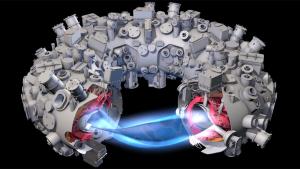Twist and fuse
There was a time in fusion history when the hopes of harnessing the power of the stars rested on a device aptly called a "stellarator." Shaped as a figure-eight torus, the stellarator was the brainchild of a 37-year-old American astrophysicist named Lyman Spitzer.
How Spitzer had a revelation for this particular design belongs to the legend of fusion. It all came to him as he was skiing in Colorado, pondering the claim that an Austrian scientist, working for Argentina's strongman Juan Perón, had just produced "the controlled liberation of atomic energy" through the simplest and lightest of all elements, hydrogen.
Now, almost 65 years after Spitzer's skiing trip to Colorado, a new age may be dawning for the stellarator. In northern Germany, the successor of Wendelstein 7-AS, dubbed "7-X," is on the verge of entering operations.
"This extremely complex geometry and the manufacturing challenges it generates are the main drawbacks of stellarators," says Rem Haange who was Technical Director of Wendelstein 7-X from 2005 to 2011 before becoming Deputy Director-General and Head of the ITER Project Department at the ITER Organization.



